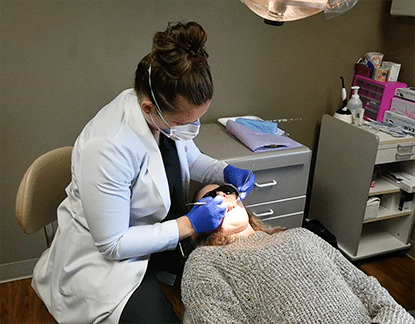It’s not uncommon to visit your dentist and be surprised when they discover a cavity you didn’t know was there. Your tooth may not always hurt when you have a cavity. When you don’t have any pain, it might not always be easy to figure out that something is wrong. Although a cavity might not be causing you a great deal of pain, it’s possible for there to be a very real problem.
Cavities are areas that have suffered tooth decay. They might appear as tiny openings or holes in your teeth. They can be caused by a number of different things such as bacteria, snacking often, drinking a lot of sugary drinks, or missing brushings. They can also occur when the proper tooth brushing methods aren’t followed.
Signs and symptoms of a cavity
The signs that you might have a cavity depend on the location of the cavity and the extent of the decay. A cavity may not hurt your tooth right away because it might be asymptomatic as it’s just beginning to develop. As it progresses though, you might experience one of these symptoms:
- Spontaneous toothache that happens without any apparent cause
- Sensitivity to temperature
- Mild or sharp pain when you eat or drink something sweet, hot, or cold
- Visible holes or pits in your teeth
- Pain when you bite down
- Brown, black, or white staining on any surface of a tooth
How long does it take to notice a cavity?
The pain mentioned above usually is a good indicator that something is wrong. However, that pain may take some time to become noticeable. There are plenty of cases where tooth decay begins but doesn’t cause any discomfort for several weeks or months. At the beginning of the decay process, the enamel is the first part of the tooth to be worn down. Enamel is the outermost part of your tooth and the part which you can see. It’s possible for tooth decay to wear down the enamel without causing any noticeable pain.
As the decay process progresses though, the decay can reach the dentin, which is one of the inner layers of the tooth. Dentin is much softer than enamel and contains pathways to the nerve of the tooth. Once the infection from the tooth decay reaches this part of the tooth, it becomes necessary to receive a root canal to get rid of the infected pulp and receive the pain.
Although it’s possible for a cavity to progress without causing pain and discomfort, it’s important to talk to your dentist about your options for treating a cavity before it becomes more of a problem. Even without pain, damage can certainly still be done. One of the best steps to take is to ensure you’re brushing properly and often.
In short, early detection with x-rays is an important aspect of cavity diagnosis. Don’t wait until you experience pain to visit the dentist. What could be caught as a small cavity requiring a routine filling can become a much more complicated and expensive problem if it is allowed to grow.





